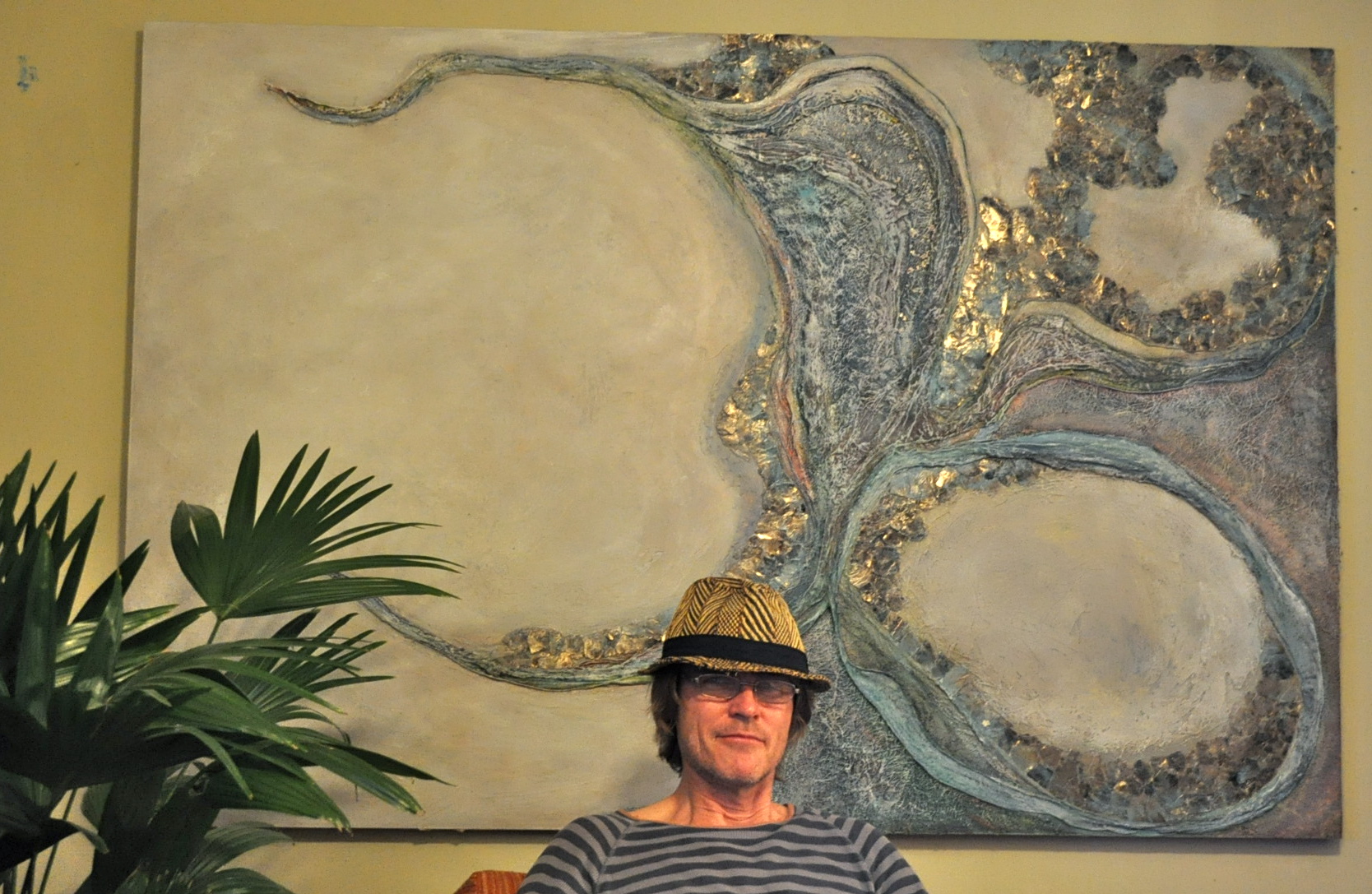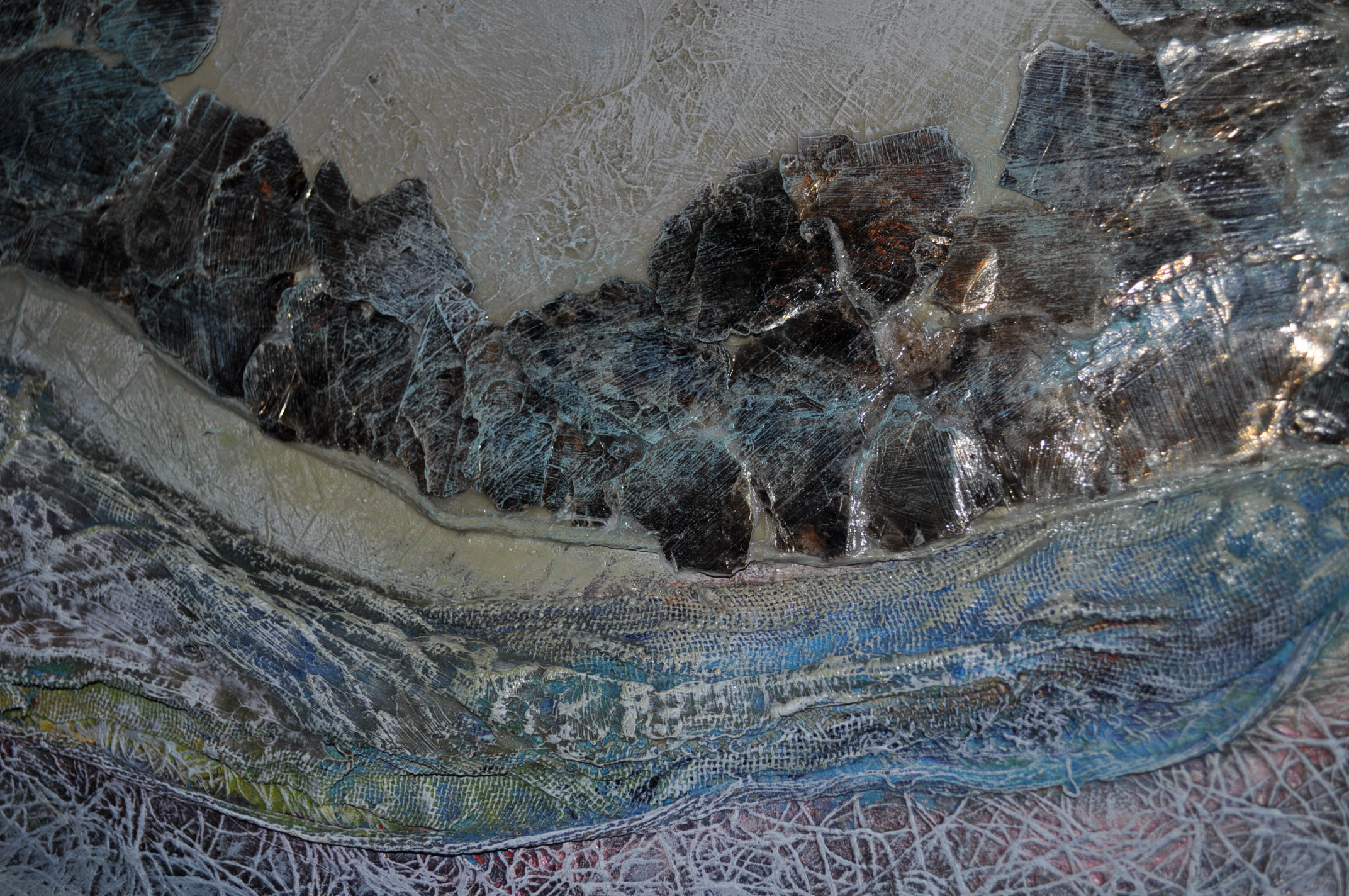Upcycling used materials such as lint from the dryer and polyester from an old duvet found on the street, fused with the metallic glow of mica, heavy gel and acrylic mediums — artist Joa Keur‘s work is at once impressive and subtle.
His three-dimensional landscapes have a magical feel: something draws you to them, yet no matter how long you look, you’re left with the sensation that something has escaped you.
These are emotions that good art produces: a compulsive need to look closer, from afar, at an angle and come back again knowing that while the painting has remained intact, something inside of you has changed. Knowing also that with every new glance, you’ll find something strangely compelling and beautiful.
If what I’m describing sounds emotionally and intellectually vigorous, Keur’s art is gracefully simple.
His painting Life of Formations (pictured below with details) has a distinctive and unique quality. Its curves, the dramatic use of mica and the superb lighting effect it produces, his ingenious mixture of garbage materials all add up to a work that is truly original.

All Photos: Beatrice Borja
It stands between the contemplative and sensuous, and for this reason, it reminds me of Canadian architect Douglas Cardinal‘s work. Both artists are influenced by nature in profound ways, and both are able to profoundly move the viewer with their landscapes.
I met Keur at the Quit Your Job – Happy Hour party at the Patrick John Mills gallery. Soft-spoken, funny and emanating good vibes, Keur explained that Life of Formations was “about the creation of life, any life.” The bottom left corner of the painting is a circle that may represent a human cell as well as the trunk of a tree.
“Above all, my work is about nature,” he said. “I see myself as a conduit, chanelling a specific energy until the piece is complete.” And in his case, it could mean years. Life of Formations, for example, took four years from start to finish. I’ve always admired artists who value a slow and growing process in order to attain something unique versus the proliferation of one’s talent, which often results in the same thing over and over again.
Many artists brand their work as a company brands products. It’s refreshing to see an art gallery filled with work and artists that are truly original.
Mills, the owner of the gallery, is an artist himself. His art openings reflect his vision — paintings cover almost every inch of his house-turned-gallery; live music and performances, installations, sculptures, poets and other expressions of the human spirit merge freely to create variety and artistic innovation.

Keur’s working will be included in the upcoming Naked Naked Naked
exhibition, from June 1 to 30. The vernissage will feature an opening
speech by the artist, so come out if you want to find out more about his work
and philosophy.
Also – with another notoriously blunt title – the gallery will be featuring queer artists in Gay Art, from Aug 2 to 25.
Patrick John Mills Contemporary Fine Art Gallery
286 Hinchey Ave
patrickjohnmills.ca
 Why you can trust Xtra
Why you can trust Xtra


